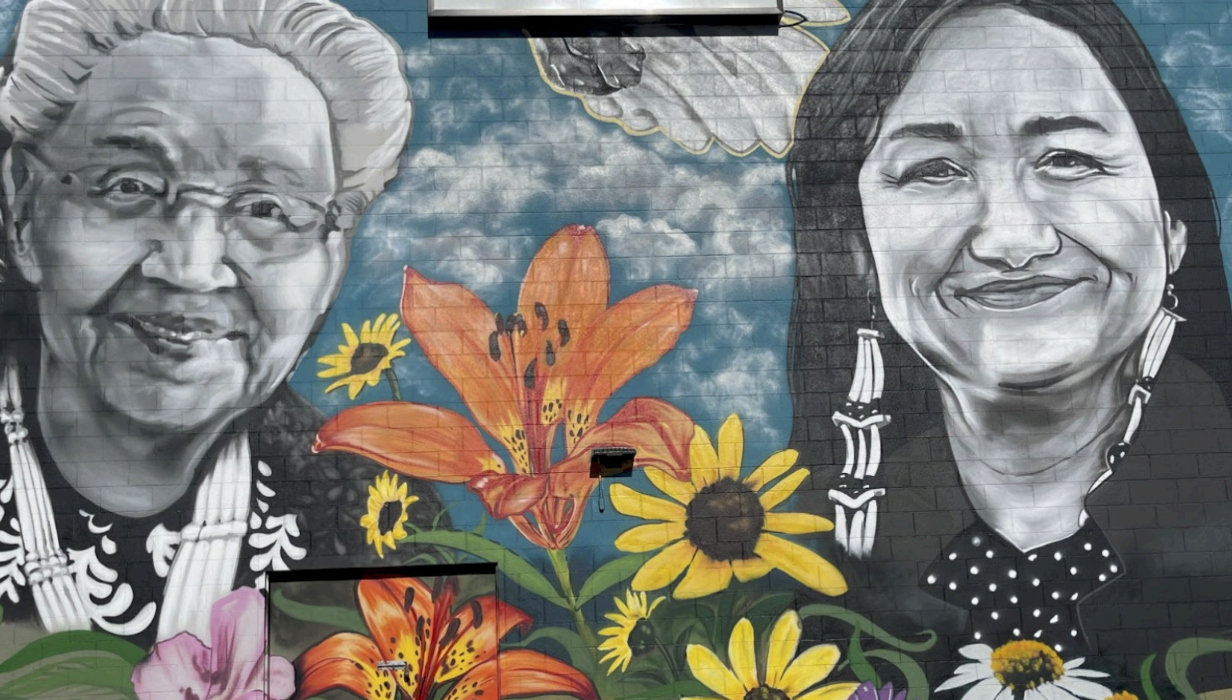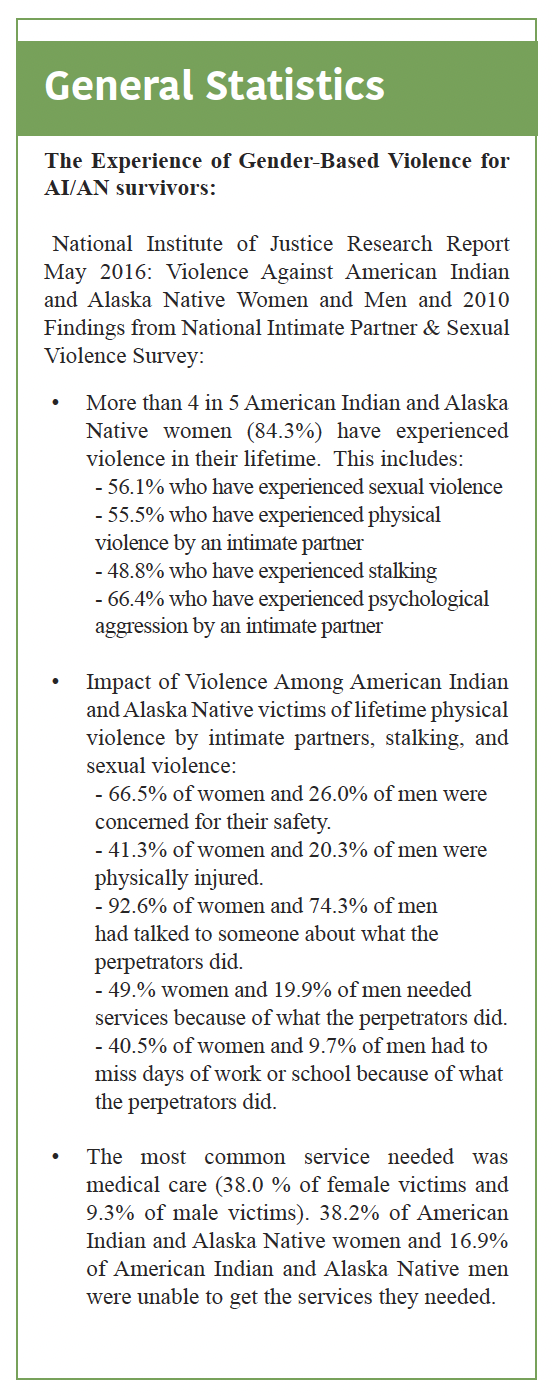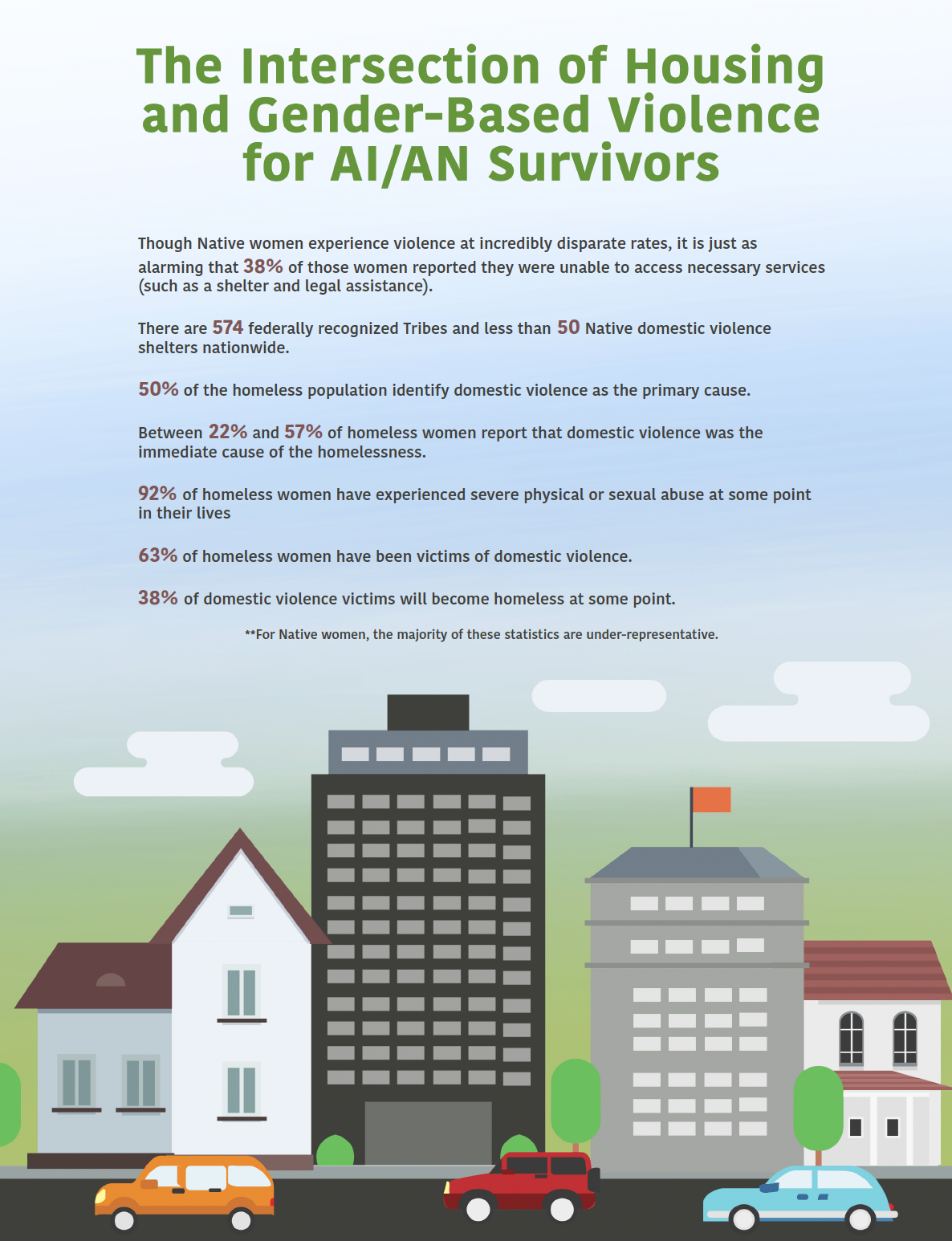Memorializing STTARS HUD Consultation Guidance

Photo courtesy of STTARS Staff.
On August 16, 2022, HUD issued a Dear Tribal Leader Letter regarding the implementation of the Violence Against Women Act (VAWA). The letter
acknowledged the survivor-centered housing provisions in VAWA 2005, 2013, and 2022. Please read the STTARS VAWA Policy Brief regarding the timeline of changes to VAWA (n8ve.net/40N3ufwu).
In March 2022, VAWA was reauthorized with expanded housing protections for survivors. It included the requirement that HUD promulgates rules regarding the implementation of the VAWA 2022 requirements within two (2) years. As of August 16, 2022, HUD was seeking Tribal input regarding the implementation of “VAWA-like” protection and requests Tribal feedback on four questions:
A. What are the challenges/barriers to helping survivors of domestic violence, dating violence, sexual assault, and stalking in HUD-assisted Tribal housing?
B. What policies do Tribes and Tribally Designated Housing Entities (TDHEs) already have in place to assist survivors?
C. Should HUD consider implementing certain policies that assist and protect survivors who reside in HUD-assisted Tribal housing? If so, what policies would they be? Please note that HUD would conduct extensive Tribal consultation before implementing any such policies.
D. Are there resources HUD could provide to help Tribes and TDHEs protect survivors?
 Comments were due on September 30, 2022, but this guidance will be helpful going forward and can be a starting place for community conversations regarding housing. STTARS provides some basic information in response to HUD’s questions below (after the inclusion of general information about this critical issue). These responses are based on our work to address housing insecurity and homelessness in Indian Country (including off-reservation communities where American Indian, Alaska Native, and Native Hawaiian (AI/AN/NH) people reside) for survivors of gender-based violence. If this starting place is not reflective of your Tribe or survivors’ experiences in your community and you would like technical assistance in regards to your housing codes, ordinances, policies, resolutions, and survivor safety please visit TTA request and our staff will be in touch.
Comments were due on September 30, 2022, but this guidance will be helpful going forward and can be a starting place for community conversations regarding housing. STTARS provides some basic information in response to HUD’s questions below (after the inclusion of general information about this critical issue). These responses are based on our work to address housing insecurity and homelessness in Indian Country (including off-reservation communities where American Indian, Alaska Native, and Native Hawaiian (AI/AN/NH) people reside) for survivors of gender-based violence. If this starting place is not reflective of your Tribe or survivors’ experiences in your community and you would like technical assistance in regards to your housing codes, ordinances, policies, resolutions, and survivor safety please visit TTA request and our staff will be in touch.
Housing and Shelter Needs of AI/AN/NH Survivors
The need for safe, affordable and sustainable housing is a grave concern for AI/AN gender-based violence survivors, the advocates and services who seek to help them, and for their communities who value them. This is especially true considering that domestic violence and sexual assault are the leading causes of homelessness in most communities within the United States. The shelter and housing “crisis” in Indian country is nothing new. Access to land, safe housing and shelter issues have been present since our Indigenous lifeways and Tribal Nations were violated by colonization. A quick study on the eras of federal Indian law and policy makes it clear that inhumane practices towards AI/AN/Indigenous peoples and Indian Tribes have historically been the norm. Housing is certainly not an exception and the basic lack of housing for AI/AN/NH peoples is factually the result of massive land theft, systemic removal, relocation, and other intentional acts across the timeline of the United States’ history.
Thus, the housing crisis in Indian country must be viewed first as a historical injustice, one that has been utilized as a tool in the ongoing genocide of Indigenous populations. The same is true for the high incidences of gender-based violence in AI/AN populations. The housing crisis and the high rates of violence, lack of adequate resources, and criminal justice response to violence across Tribal nations and in communities where AI/AN people reside cannot be viewed as randomized or even consequential occurrences, but rather as manifestations of a larger goal: the eradication of Indigenous people from their lands.
Housing is a basic human right, yet AI/AN survivors of gender-based violence frequently report access, habitability, or sustainability issues, leading to layers of vulnerability and increased risk of new or continued victimization. These issues are felt universally by the AI/AN population across the housing spectrum. Just as there are urgent issues for AI/AN survivors of gender-based violence who attempt to access shelters or emergency and transitional housing, the same issues are present concerning the availability of housing assistance and affordable, habitable, sustainable, and stable housing.
STTARS Responses to HUD Questions
A. What are the challenges/barriers to helping survivors of domestic violence, dating violence, sexual assault, and stalking in HUD-assisted Tribal housing?
The barriers facing survivors in HUD-assisted Tribal housing are best characterized as structural. The following list exemplifies some of this (but is meant to be merely illustrative):
- Housing can be time-capped;
- Requirements to maintain housing are overburdensome;
- Funding is limited and does not meet the disparate need of Indigenous survivors;
- Housing is not habitable;
- Housing inventory is severely limited;
- Rent is exceptionally high and increasing;
- Economic and community development and lack of jobs or employment impacts on maintaining and sustaining housing;
- COVID-related assistance is ending;
- Eviction moratoriums ended; and
- Western practices are pervasive (either as part of funding requirements or around the idea of maintenance/care/access/sustainability affordability/etc.).
Some Tribal codes include provisions that mirror western practice, which may not be survivor-centered (but may also be in place due to the disparate funding issue). For example:
- Nuisance Ordinances;
- One-Strike Laws;
- Expedited Eviction Codes (usually related to substance misuse);
- Requirement of certain disclosures (prior convictions/other application disclosures regarding systems interactions);
- Financial barriers to accessing housing (application fees, prior evictions, lack of employment);
- Access to information can be limited or restricted by Internet access/sometimes not publicly available;
- Rigid rules around care/maintenance of housing units;
- Rigid rules regarding pets (prohibition against pets);
- Limitations regarding who can reside in a unit;
- Citations and fines for garbage/maintenance/upkeep;
- Lack of ADA compliance or similar regulations/ordinances; and
- Substance abuse/misuse policies (for example: requiring a clean drug screening).
The major issue with many of the provisions above is that emphasis is placed on the protection of an asset (the housing unit), rather than on the survivor. Additional barriers include non-Native/not trauma-informed property management companies, decentralization of codes/ordinances and regulations (due to the intersectionality of gender-based violence and housing), rules relating to children (curfews/ punitive treatment of parents), non-Native Organizations serving as Tribally Designated Housing Entities, problematic terminology (“needy family” programs), and views of survivors generally.
B. What policies do Tribes and Tribally Designated Housing Entities (TDHEs) already have in place to assist survivors?
Many Tribes have laws and policies which center on the survivor experience. For example:
- Codes/policies that consider survivor economic impacts, such as domestic violence paid leave;
- Codes/policies that have eviction protections, such as no “self-help” laws (a landlord cannot carry out an eviction without a court order);
- Codes/policies that reflect compliance with the Violence Against Women Act 2013 and 2022 (non-compulsory for Tribes who receive only IHBG funding);
- Codes/policies that create enforceable minimum standards for rental properties (fines for violations);
- Codes/policies that reflect intersectional practices (minor clothing allowance ordinances, low barrier applications, childcare provisions, etc.);
- Codes/policies that include provisions that promote dignity and autonomy (elder protections/paths to permanency/provisions that clearly state the duty to care for one another);
- Codes/policies that consider AI/AN/NH survivors’ unique safety and confidentiality needs; and
- Codes/policies that represent low barrier access (applications fees waived or low or provided for, case management that is rooted in dignity, respect and trust, and language access).
Many Tribes also have codes that memorialize the central role of culture in housing. With culture being THE core protective factor for AI/AN/NH people, policies that are reflective of this, are inherently survivor-centered.
C. Should HUD consider implementing certain policies that assist and protect survivors who reside in HUD-assisted Tribal housing? If so, what policies would they be? Please note that HUD would conduct extensive Tribal consultation before implementing any such policies.
First and foremost, Tribes are sovereign. HUD should not implement any rules without meaningful and consistent consultation with Indian Tribes and absent full compliance with NAHASDA and the Federal Trust Responsibility. Meaningful consultation occurs when the rules reflect the testimony provided, not merely a box indicating consultation occurred.
At a minimum, policies enacted:
- Must take into account the impact of the pandemic on AI/AN/NH survivors, Tribes, Tribal Housing Authorities, and Tribally Designated Housing Authorities;
- Should be implemented concurrently with full funding that meets the trust relationship of the federal government to Tribes, meets the fiduciary standard, and addresses past funding disparities (which are severe);
- Must respect and prioritize the safety and cultural needs of AI/AN/NH survivors;
- Must respect and prioritize Tribal self-determination;
- Must consider the historical and ongoing impacts of colonization on Tribal housing and access to safe housing and shelter for AI/AN/NH survivors;
- Must increase access to safe housing and shelter for AI/AN/NH survivors;
- Should create adequate funding sources for Tribes and Tribal programs to be able to build, staff, maintain and sustain domestic violence shelters;
- Should create incentives, but not penalties, for Tribes who implement policies that are consistent with VAWA 2013 and 2022;
- Should consider the diversity of Tribal communities, their unique needs, and their many strengths;
- Should ensure funding for concurrent services for survivors that are culturally based;
- Should uphold NAHASDA;
- Must include the right to appeal;
- Should consider the unique geographic and existing infrastructure in Tribal communities; and
- Should not be implemented without adequate training and technical assistance to grantees.
D. Are there resources HUD could provide to help Tribes and TDHEs protect survivors?
Yes. Examples include (not an exhaustive list):
- Flexible funding;
- Funding for application fees, deposits for first and last;
- Transportation vouchers;
- Funding to keep survivors in their current homes;
- Funding opportunities that address intersectional issues (childcare, health, mental and behavioral health, food, sanitation, clean water, Internet access, etc.); and
- Consistent and frequent training regarding gender-based violence, including trauma-informed and culturally grounded approaches.
The Intersection of Housing and Gender-Based Violence

Subscribe to the STTARS Mailing List
Interested in Housing news? Sign up here: n8ve.net/ilX18!





